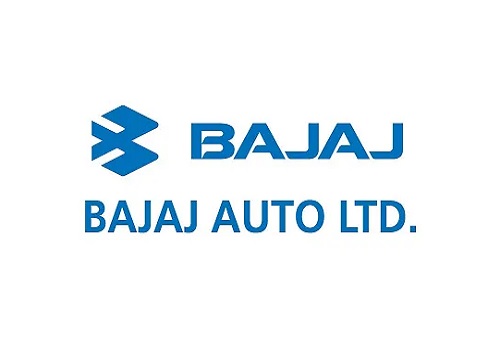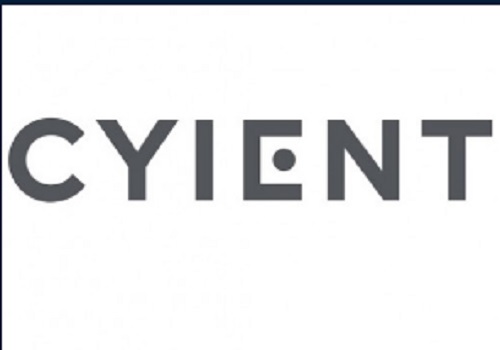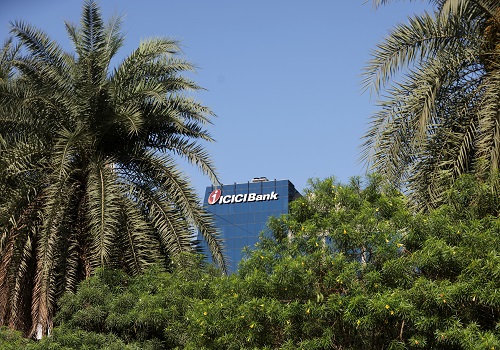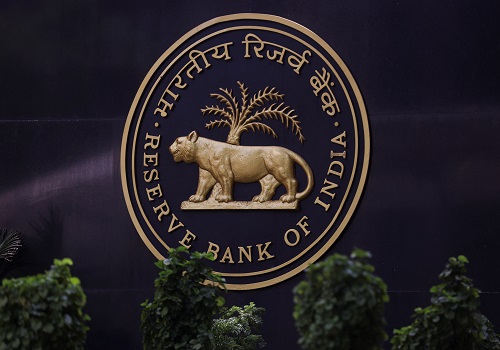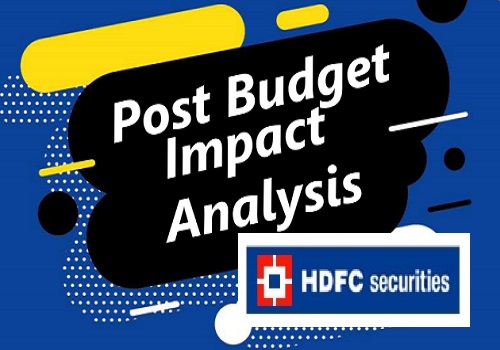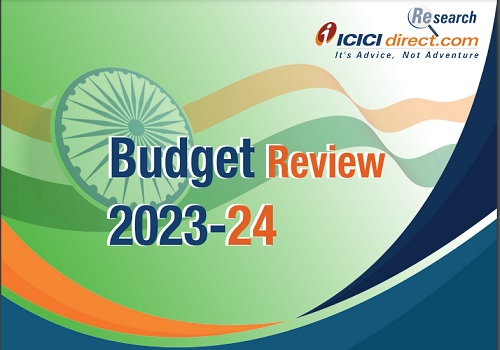Unioin Budget 2021 : Go Go Growth By Axis Mutual Fund

Follow us Now on Telegram ! Get daily 10 - 12 important updates on Business, Finance and Investment. Join our Telegram Channel
https://t.me/InvestmentGuruIndiacom
Download Telegram App before Joining the Channel
BUDGET 2021 - GO GO GROWTH
“Crisis provides the opportunity for us to do things that you could not do before – Rahm Emanuel.”
In a bold move the honourable finance minister, Nirmala Sitharaman, delivered a pro-growth budget. Spearheaded by government spending on long term projects including infrastructure, the government aims to get the economy out of the Covid shadow. The budget also aims to build on the work done during the lockdown in supporting growth and making structural reforms. As expected given higher deficits and pro-growth tilt the debt markets sold off while equity markets were sharply positive.
Given the weak macro, markets widely expected additional taxes and/or reduced spending to manage the Fiscal deficit within the FRBM targets. Amending the FRBM act is a clear indication of the government focusing on growth over consolidation. Equity markets cheered the budget with a sharp 5%+ rally. Debt markets sold off ~15 bps in response to a weaker than expected fiscal outlook.
Key highlights
* Fiscal deficit for FY 2020-21 pegged at 9.5% (RE), FY 2021-22 at 6.8%.
* No changes to personal income tax limits or tax brackets.
* LIC proposed to be listed; 2 public sector banks and 1 general insurance company likely to be privatised.
* Gross government borrowing for FY 22 pegged at ` 12 lakh crore.
* Innovative asset monetization program
* FDI cap in the insurance sector raised to 74%
Budget takeaways
The government held steadfast to its objective of stimulating growth by way of enhancing its expenditure programs. This is despite weaker than expected revenue collections. The result is significantly higher borrowings from the market to fund the widening fiscal deficit. The government has extended its fiscal consolidation timeline in the process to reach a fiscal deficit level below 4.5% of GDP by 2025-2026.
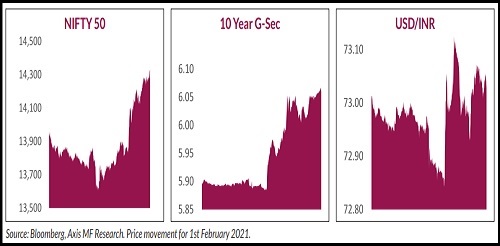
Capex all the way
The government has gone all guns blazing on its proposed infrastructure spending. The budget outlines a new National Infrastructure pipeline comprising of 7,400 projects. The comprehensive plan also includes an asset monetization game plan comprising of assets including airports, toll roads, rail infra assets, warehousing assets of CPSE’s and even sports stadiums.
To help fund infrastructure, the government has proposed a development financial institution (DFI) with a proposed capital infusion of ` 20,000 crore. The institution is part of a larger three pronged plan to increase investments in the economy. It is expected to build a lending portfolio of at least ` 5 lakh crore within three years’ time.
For FY21 (BE) – Capex will end at ` 4.39 Lakh Crore. For FY22, the government has forecasted a stupendous 35% increase. The government will also activate state bodies and the state machinery with a ` 2 lakh crore budget.
Cleaning the books
The government over the last few years has been using off-balance sheet funding to make payments for food & fertilizer related subsides. The fiscal deficit number of 6.8% budgets a significant shift of off balance sheet liabilities to the tune of ~` 3.7 lakh Cr to the government’s books explaining partially the jump in the fiscal deficit.
Furthermore, since this is an annual expenditure, the government by virtue of kicking the proverbial fiscal consolidation can down the road to FY26 effectively means it is looking to clean up its books over the next few years.
An ode to health & wellbeing
As part of her six pillar approach the FM has emphasised on the need for health and wellness. To that effect A new centrally sponsored scheme, PM Atma Nirbhar Swasth Bharat Yojana, will be launched with an outlay of about ` 64,180 crores over 6 years. This will develop capacities of primary, secondary, and tertiary care Health Systems, strengthen existing national institutions, and create new institutions, to cater to detection and cure of new and emerging diseases. This will be in addition to the National Health Mission. In addition, to promote healthy living, the government has budgeted ~` 3 lakh Crores across 5 years to improve facilities in the areas of sanitation, clean air and nutrition.
Bolstering manufacturing
With an eye on Atma Nirbhar Bharat and generating jobs for the youth, the government has taken the enhanced the Production Linked Incentive scheme. The budget also envisages tweaks on imported products via customs duty to promote import substitution.
Notably the textile sector will be given impetus above and beyond the PLI scheme by way of launching 7 large textile parks over the next 3 years. The Mega Investment Textiles Parks (MITRA) aims to build and provide plug & play facilities to enable and create global champions in exports.
Capital markets & financial services
Continuing its sweeping reforms, the budget envisages a slew of changes to promote further to promote channelizing domestic savings and attracting foreign flows. Some key announcements include
* Consolidate the provisions of SEBI Act, 1992, Depositories Act, 1996, Securities Contracts (Regulation) Act, 1956 and Government Securities Act, 2007 into a rationalized single Securities Markets Code
* Creating a ‘Bad bank’ to consolidate and take over the existing stressed debt and then manage and dispose of the assets
* Public sector bank re-capitalization of ` 20,000 Cr
* Decriminalizing of the procedural and technical compoundable offences under the Companies Act, 2013
* Amendments to the LIC act to pave the way for an IPO
* FDI cap in Insurance sector raised to 74%
* Amending procedural and TDS related aspects for NRI/foreign investors
Way forward & market view
Budget day saw markets post its single largest daily gain as markets cheered several positives. On the debt side there is significant headwinds as we anticipate higher yields over the coming year.
Equity markets
The equity markets see the budget favourably primarily on 2 fronts – Higher capex spending by the government & status quo on direct taxes and no incremental taxes on capital gains. The booster shot by way of capex and a strong market signal to promote growth through structural reforms are key positives for domestic and foreign investors alike
Q3 earnings have been above consensus estimates. Cyclical sectors and companies who have proven market leadership have seen a good earnings quarter. We believe this is here to stay. While valuations remain elevated, equity markets are likely to continue to outperform as budgetary tailwinds aid economic growth and investors assign higher valuation premiums to FY22 growth.
Debt markets
The budget was a surprise for the debt markets. The deviation in FY 21 fiscal deficit entails additional supply of ` 80,000 Cr of market borrowing. In addition, the FY 22 fiscal deficit estimates point to significant borrowing expectations. The gross borrowing target of FY 22 is pegged at ` 12 lakh crore. We believe the RBI may step in to support the markets by way of OMO’s if it deems necessary. The higher than expected supply is likely result in rates rising over the next few quarters. In line with our view, we believe rates are likely to rise with a flattening bias across the curve and across the credit spectrum.
To Read Complete Report & Disclaimer Click Here
Above views are of the author and not of the website kindly read disclaimer


